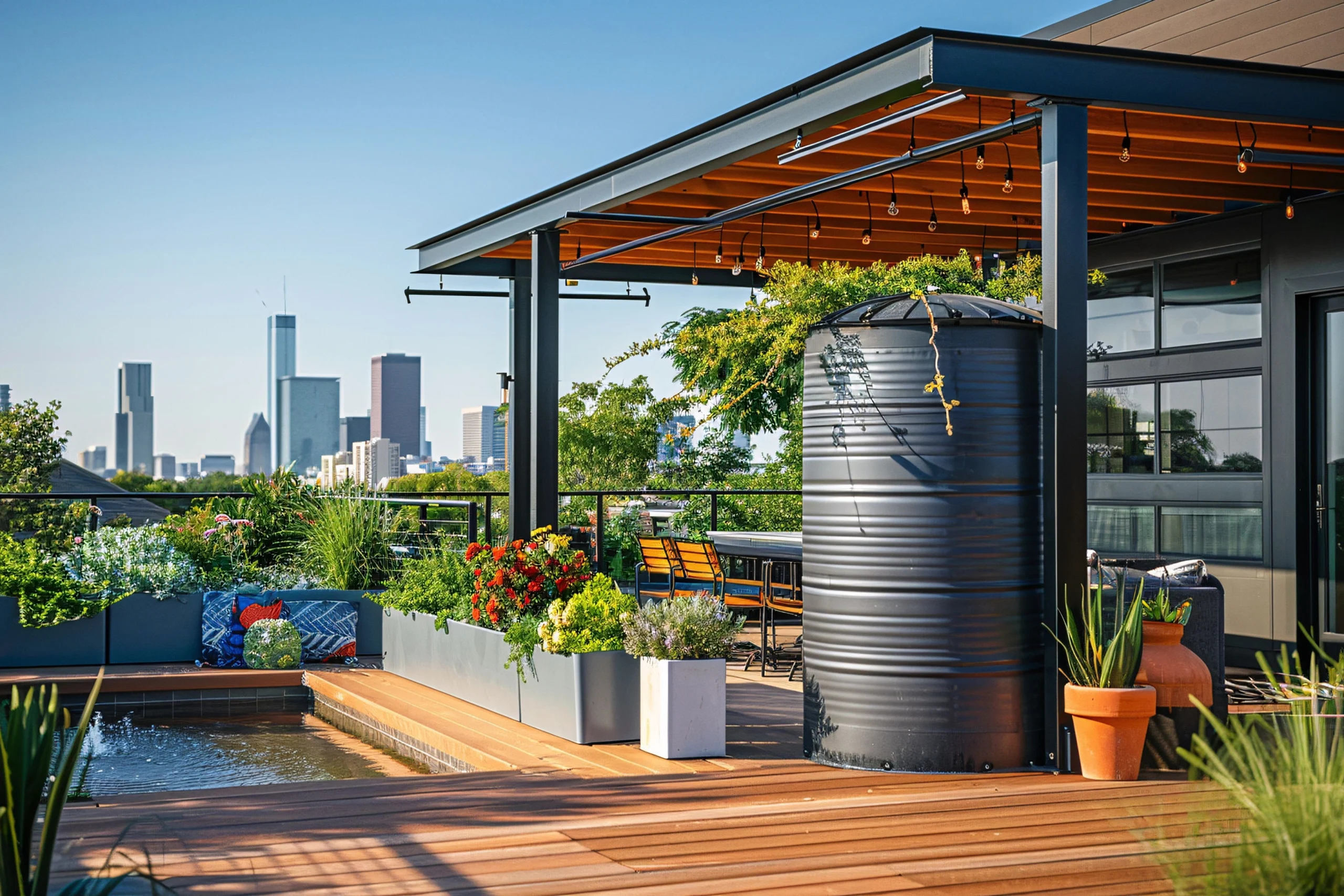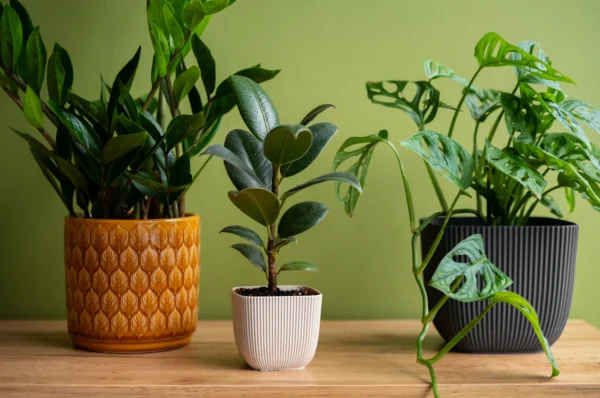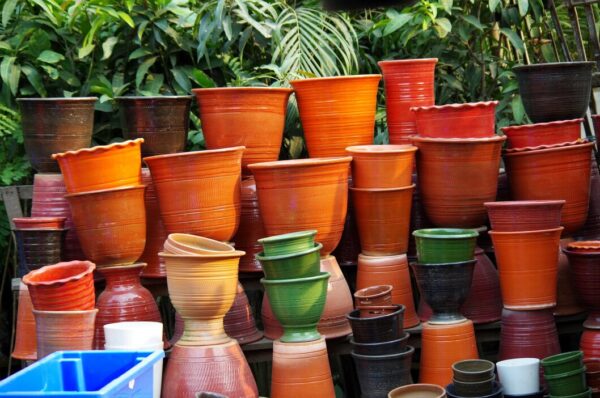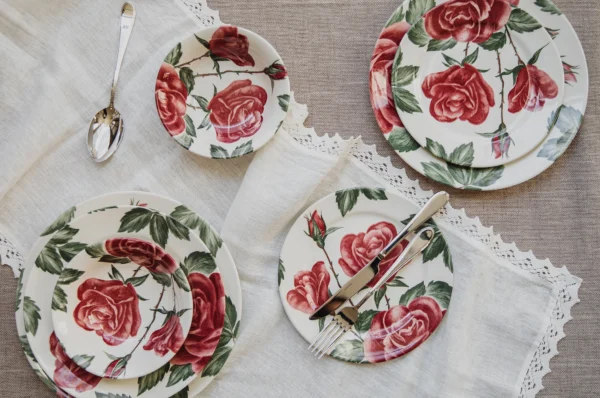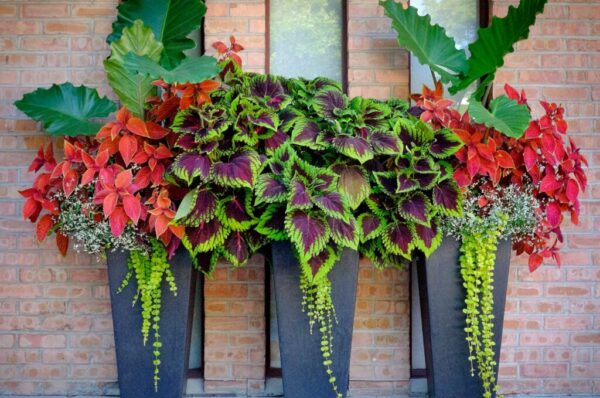Creating a home terrace garden isn’t just about growing plants; it’s about building a lifestyle of peace, purpose, and sustainability. But let’s be honest: while terrace gardening seems easy in terrace garden ideas reel and Pinterest boards but in real life, it comes with a set of challenges.
From choosing the right ceramic planters and pots to maintaining soil health on a rooftop, many beginners give up early because they lack the right guidance. But you can grow a terrace garden easily, beautifully, and without stress — even if you’re living in a compact apartment or a rented home.
Can I grow my rented apartment like terrace garden apartments?
Yes — and you don’t need to break any rules either.
One of the biggest myths is that terrace gardening is only for bungalow owners. But with lightweight, portable ceramic pots, even people living in terrace garden apartments can grow flowers, herbs, or even vegetables without making permanent changes.
1. Use freestanding ceramic planters that don’t require drilling or soil layering.
2. Choose stackable or railing-hanging planters if you have less floor space.
3. Grow fast-growing herbs (like mint, coriander, and tulsi) that don’t require deep root zones.
Bonus Tip: Use foldable garden shelves or racks to maximize vertical space without touching the actual floor.
What if my terrace gets too much sun or too little sun?
This is one of the biggest challenges in home terrace gardening, and it can be solved with better planning, not expensive tools.
If your terrace gets too much sun:
- Use ceramic pots — they reflect heat and protect the roots.
- Grow heat-tolerant plants like marigolds, aloe vera, hibiscus, or lemongrass.
- Use shade nets or bamboo screens during peak summers to prevent leaf burn.
If your terrace has low sunlight:
- Focus on shade-loving plants like ferns, peace lilies, or money plants.
- Use raised planters to shift plants to the brightest spots.
- Avoid flowering vegetables — focus on leafy greens or decorative foliage.
How do I prevent my terrace garden from becoming messy or waterlogged?
One common issue people face is drainage — especially during monsoons or if they water too frequently.
1. Always choose ceramic pots with proper drainage holes.
2. Add a layer of pebbles or crushed stones at the bottom before adding soil.
3. Use lightweight soil mix — 40% cocopeat, 40% compost, and 20% perlite or sand.
Also, keep a tray or plate under each pot to collect excess water — this prevents mess and protects your flooring.
What plants should I start with if I’ve never gardened before?
Don’t go overboard in the beginning. Many people make the mistake of buying too many seeds or plant types and then get overwhelmed.
Start small with these easy and forgiving options:
- Herbs: Mint, coriander, basil, lemongrass, tulsi
- Flowers: Marigold, periwinkle, zinnia
- Foliage: Snake plant, money plant, spider plant
- Leafy greens: Spinach, methi, lettuce (grow well in shallow ceramic planters)
Group them based on sunlight and water needs. Place your ceramic pots accordingly — sun lovers on the outer edge, shade plants near the wall or shaded side.
How do I manage pests without using chemicals?
Pests in a terrace garden are common, especially aphids, mealybugs, and caterpillars. Instead of spraying harmful chemicals, go for safer and more eco-friendly solutions.
- Neem oil spray (2 tsp neem oil + 1 litre water + few drops of liquid soap) – spray weekly
- Garlic-chilli spray – natural deterrent for insects
- Use companion planting – like marigolds near vegetables to repel pests
- Wipe leaves with a cloth soaked in soapy water if infestation is mild
Also, inspect the bottom of ceramic planters regularly, as moist areas attract insects if not cleaned.
How do I make my terrace garden look beautiful and organized?
Beauty lies in simplicity. A cluttered garden looks messy and discourages maintenance. Use these styling tips:
- Mix planter sizes – tall ceramic pots at corners, medium ones along pathways, and mini planters on tables or ledges
- Choose a color theme – whites and pastels for modern minimal, terracotta and browns for earthy vibes
- Add layers and height – use garden stools or recycled crates to place pots at different levels
- Include non-plant elements – a small bench, wind chime, wall-mounted ceramic hangers, or fairy lights
By organizing well, you make the space feel like a well-designed room, not just a random collection of plants.
How do I grow vegetables on my terrace without using chemical fertilizers?
If you want your roof terrace garden to be organic, start with the soil.
- Prepare a good potting mix with compost, cocopeat, and cow dung
- Use kitchen compost regularly (banana peels, tea leaves, vegetable peels)
- Rotate crops every few months to avoid soil fatigue
- Grow nitrogen-fixing plants like methi and moong in between vegetable crops
- Apply vermicompost or homemade compost tea twice a month
Use medium to large ceramic pots with enough root depth for vegetables like tomatoes, okra, or chillies. Leafy greens can grow even in shallow planters.
Is ceramic better than plastic for terrace gardening?
Yes — and here’s why more urban gardeners are now choosing ceramic planters & pots:
- Plastic pots heat up quickly, which can burn roots — especially in summer.
- Ceramic pots maintain soil temperature, keeping roots cool.
- They’re non-toxic, eco-friendly, and age beautifully.
- Available in neutral and vibrant tones, they complement both modern and traditional homes.
- They’re more stable, which helps prevent toppling due to wind.
While ceramic may seem heavier, their aesthetic and functional benefits far outweigh the downsides.
A Green Terrace is Possible
Your terrace garden doesn’t have to be perfect — it just has to be yours. Whether you’re in terrace garden apartments or have a large rooftop, you can start with just a few ceramic pots, a handful of herbs, and the desire to grow something.
You don’t need a gardener. You don’t need a big budget.
What you do need is a little time, the right setup, and a curious mindset to learn and adapt.
Every plant you grow becomes a part of your story — and that story starts with the first seed.
Key Takeaways
- Use ceramic pots for durability, breathability, and visual appeal
Understand your light and weather conditions before choosing plants

